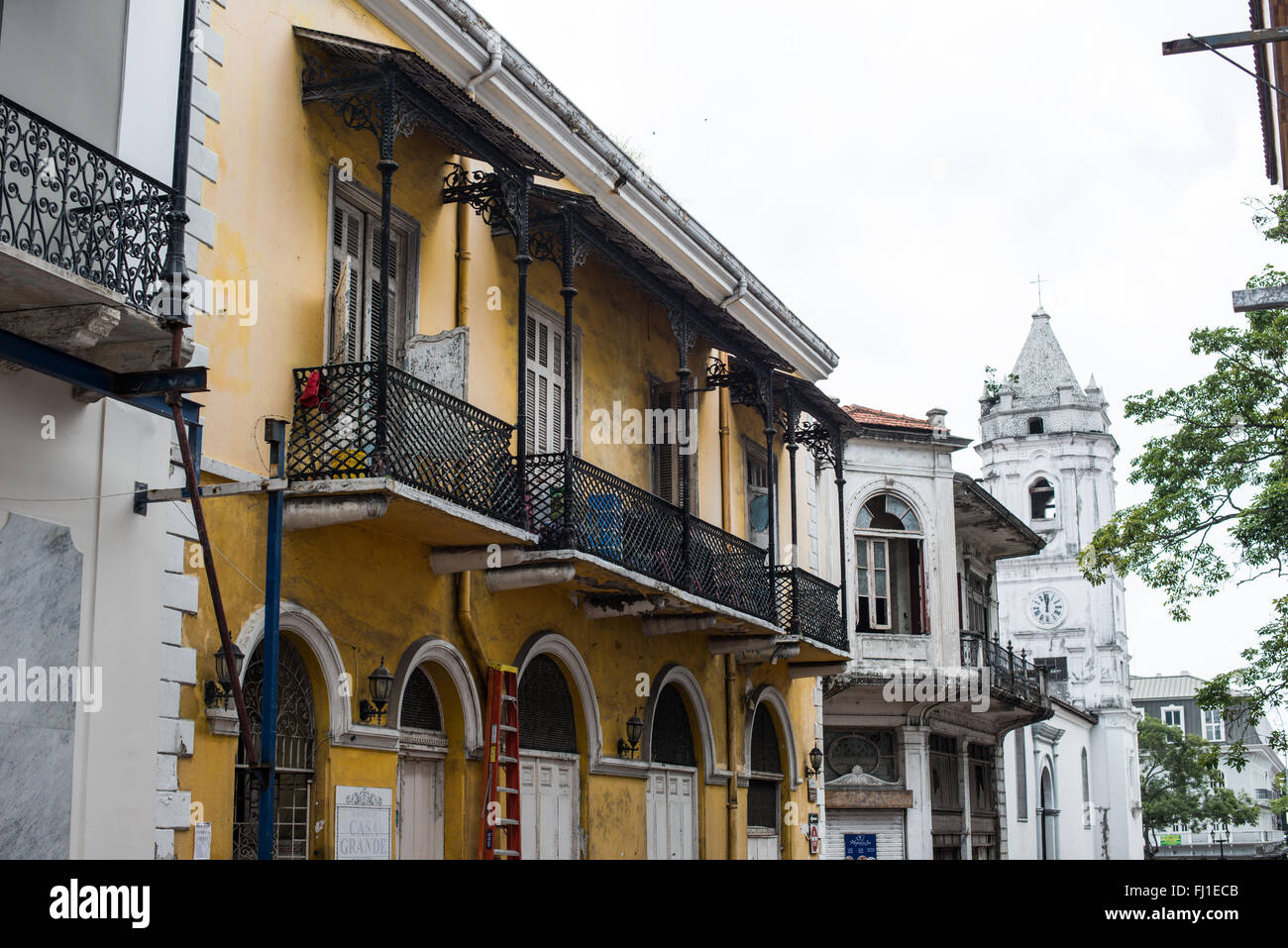PANAMA CITY, Panama — Buildings and Spanish colonial architecture on the streets of the historic Casco Viejo (San Felipe) district of Panama City, Panama. The area was founded in the 17th century after an older part of Panama City, Panama Viejo, was raided and destroyed. Casco Viejo now enjoys protection as a UNESCO World Heritage site which imposes strict rules about how building renovations are conducted.

Image details
Contributor:
David Coleman | Have Camera Will Travel / Alamy Stock PhotoImage ID:
FJ1ECBFile size:
85.9 MB (3.5 MB Compressed download)Releases:
Model - no | Property - noDo I need a release?Dimensions:
6706 x 4476 px | 56.8 x 37.9 cm | 22.4 x 14.9 inches | 300dpiDate taken:
26 July 2015Location:
Casco Viejo, Panama City, Panama, PanamaMore information:
Casco Viejo, also known as San Felipe, is the historic district of Panama City. Founded in 1673, it was built following the near-total destruction of the original Panama City, which was attacked by pirates. This new city was strategically placed on a small peninsula, completely isolated by the sea and a defensive system of walls. Today, Casco Viejo is a UNESCO World Heritage Site known for its unique blend of architectural styles, which include Spanish colonial, neoclassical, and Art Deco. The district features narrow, winding cobblestone streets and colorful buildings with balconies overflowing with flowers. Numerous churches and plazas are scattered throughout the district, with standout landmarks including the Metropolitan Cathedral, the Municipal Palace, and the National Theatre. Historically, Casco Viejo was a vibrant cultural and economic hub, but the area fell into disrepair in the late 20th century. Significant restoration efforts began in the early 2000s, which revitalized many of the district's historic buildings, turning them into boutique hotels, restaurants, shops, and residential areas while preserving their historical integrity. Despite modern advancements, Casco Viejo has retained its old-world charm. The district's architecture and layout have largely remained the same since its inception, offering a glimpse into the city's past. Its streets and plazas are alive with activity, from the bustling public markets to the lively festivals and cultural events that take place throughout the year. Casco Viejo's significance extends beyond its historical and architectural value. As a symbol of the city's resilience and evolution, it holds an essential place in Panama's cultural identity and heritage. The district is not only an important site for local residents but also a significant destination for international visitors exploring Panama's history and culture.